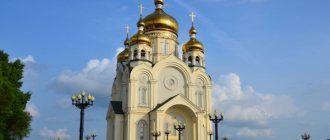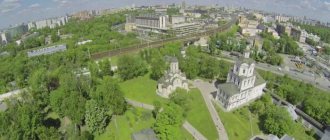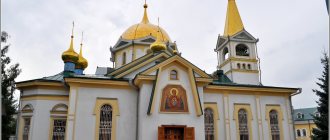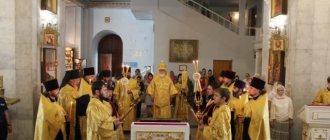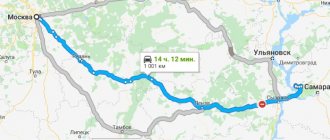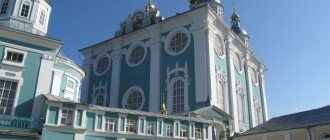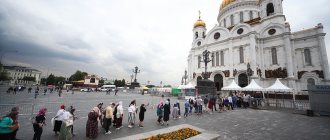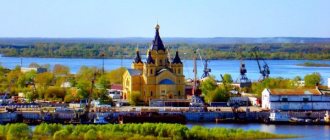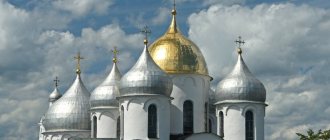Mir
Russia Moscow region Zvenigorod Ascension Cathedral (Zvenigorod) Map is loading…
{"format":"leaflet","minzoom":false,"maxzoom":false,"limit":50,"offset":0,"link":"all","sort":[""], "order":[],"headers":"show","mainlabel":"","intro":"","outro":"","searchlabel":"\u2026 \u0441\u043b\u0435\ u0434\u0443\u044e\u0449\u0438\u0435 \u0440\u0435\u0437\u0443\u043b\u044c\u0442\u0430\u0442\u044b","default":"","import-annotation":false,"width ":"auto","height":"350px","centre":{"text":"","title":"""link":"","lat":55.73029999999999972715158946812152862548828125,"lon": 36.851190000000002555680111981928348541259765625,"icon":""},"title":"","label":"","icon":"","lines":[],"polygons":[],"circles":[ ],"rectangles":[],"copycoords":false,"static":false,"zoom":8,"defzoom":14,"layers":["OpenStreetMap"],"image layers":[] ,"overlays":[],"resizable":false,"fullscreen":true,"scrollwheelzoom":true,"cluster":false,"clustermaxzoom":9,"clusterzoomonclick":true,"clustermaxradius":80, "clusterspiderfy":true,"geojson":"","clicktarget":"","showtitle":true,"hidenamespace":false,"template":"","userparam":"","activeicon": "","pagelabel":false,"ajaxcoordproperty":"","ajaxquery":"","locations":[{"text":"\u003Cb\u003E\u003Ca href=\"/palomnik/%D0% 92%D0%BE%D0%B7%D0%BD%D0%B5%D1%81%D0%B5%D0%BD%D1%81%D0%BA%D0%B8%D0%B9_%D1%81% D0%BE%D0%B1%D0%BE%D1%80_(%D0%97%D0%B2%D0%B5%D0%BD%D0%B8%D0%B3%D0%BE%D1%80%D0 %BE%D0%B4)\" title=\"\u0412\u043e\u0437\u043d\u0435\u0441\u0435\u043d\u0441\u043a\u0438\u0439 \u0441\u043e\u0431\u043e\u0440 (\u041 7 \u0432\u0435\u043d\u0438\u0433\u043e\u0440\u043e\u0434)\»\u003E\u0412\u043e\u0437\u043d\u0435\u0441\u0435\u043d\u0441\u043a \u0438\u0439 \u0441\ u043e\u0431\u043e\u0440 (\u0417\u0432\u0435\u043d\u0438\u0433\u043e\u0440\u043e\u0434)\u003C/a\u003E\u003C/b\u003E\u003Chr /\u0 03E\u003Ca href= \"/palomnik/%D0%A1%D0%B2%D0%BE%D0%B9%D1%81%D1%82%D0%B2%D0%BE:%D0%90%D0%BD%D0%BD %D0%BE%D1%82%D0%B0%D1%86%D0%B8%D1%8F\" title=\"\u0421\u0432\u043e\u0439\u0441\u0442\u0432\u043e:\u0410\ u043d\u043d\u043e\u0442\u0430\u0446\u0438\u044f\»\u003E\u0410\u043d\u043d\u043e\u0442\u0430\u0446\u0438\u044f\u003C/a\u003E: \u041f\u0435\u0440 \u0432\u0430\u044f »'\u0412\u043e\u0437\u043d\u0435\u0441\u0435\u043d\u0441\u043a\u0430\u044f \u0446\u0435\u0440\u043a\u043 e\u0432\u044c»' \u0431 \u044b\u043b\u0430 \u043f\u043e\u0441\u0442\u0440\u043e\u0435\u043d\u0430 \u0432 1792 \u0433\u043e\u0434\u0443. 1930, 1930 0\u043c\u0435\u0441\u0442\u0435 \u0446\u0435\u0440\u043a\u0432\u0438 \u043e\u0441\u0442\u0430\u043b\u0441\u044f \u043f\u0443\u0441\u0442\u044b\u0440\u044c. 2003-2007 u0435\u0432\u044b\u0441\u0442\ u0440\u043e\u0435\u043d\u0430 \u043d\u043e\u0432\u0430\u044f \u043a\u0438\u0440\u043f\u0438\u0447\u043d\u0430\u044f \u0446\u 0435\u0440\u043a\u043e\u0432\ u044c.","title":"\u0412\u043e\u0437\u043d\u0435\u0441\u0435\u043d\u0441\u043a\u0438\u0439 \u0441\u043e\u0431\u043e\u0440 (\u0417\u 0432\u0435 \u043d\u0438\u0433\u043e\u0440\u043e\u0434)","link":"","lat":55.73029999999999972715158946812152862548828125,"lon":36.85119000000000 2555680111981928348541259765625,"icon":""}],"imageLayers":[ ]}
55.730269; 36.851121
Russia, Moscow region, Odintsovo city district, Zvenigorod, Moskovskaya street, 2A
Zvenigorod, Moscow region 143180
Russia
Telephone:
+7 (916) 495-51-51
First Ascension Church
was built in 1792. Closed in 1930, broken down in 1941, leaving a vacant lot in place of the church. In 2003-2007, a new brick church was built on the old site. This is a four-pillar, five-domed brick building in the neo-Byzantine style.
Story
The modern Ascension Cathedral in Zvenigorod was built at the beginning of the new millennium, in 2007. The ceremonial illumination of the premises took place on July 27, which was carried out by Metropolitan of Krutitsky and Kolomna. On the same day, a liturgy was held for the first time under the leadership of Patriarch Alexy II of Moscow and All Rus'.
In the place where the modern temple is built, identical buildings have long been built. All that is known about the first church in Zvenigorod is that it was built here back in the sixteenth century. The first mention of the temple in chronicles dates back to the seventeenth century. In 1630, Patriarch Filaret visited him on his way to a pilgrimage. After this, many patriarchs and kings paved their way through it, thanks to which it became famous.
In the eighteenth century, Zvenigorod underwent some changes and was divided into quarters. Thanks to this, the Ascension Cathedral grew and developed. In 1781, the city acquired county status, which required the construction of a new stone building on the site of the old wooden church. The building, ready by 1782, was consecrated in the name of the Ascension of the Lord, and the thrones within, respectively, in the name of the Tolga Icon of the Blessed Virgin Mary and St. Nicholas the Wonderworker.
At the end of the nineteenth and until the beginning of the twentieth century, the temple was visited by many bishops and metropolitans of Moscow. In particular, Dmitry Mozhaisky served here in 1914. According to history, during his ministry the First World War began. Then the bishop called on the townspeople to defend the Tsar and the Fatherland.
The Church of the Epiphany on Gorodok was built in the 19th century
The Church of the Epiphany on Gorodok is another temple in the city of Zvenigorod, which was built in the 19th century. Initially, the Epiphany Church was wooden. If you look closely, you can see some connection with the Assumption Cathedral. What kind of connection is this?
The Epiphany Church was erected in order to reduce the number of services in the Assumption Cathedral, and at that time the Church of the Epiphany successfully coped with its functions.
Currently, in the temple you can see frescoes by Andrei Rublev himself.
The history of the Epiphany Church in Gorodok is quite sad, since in the 30s of the 20th century the temple was burned.
In 2001, a new stone church was laid in honor of the Epiphany of the Lord. The temple was consecrated in 2003.
Currently, the temple is considered operational and open to parishioners. The temple can be visited at the address: Odintsovo district, Zvenigorod city, town 2.
Ruin and restoration
The tragic events for the temple are associated with the advent of the revolution in 1917, when all its property was nationalized, and in 1922 it closed completely. A grain procurement point and storage facility were placed here, and for the convenience of carrying out the work, some destruction was carried out. From 1939 to 1941, a large garage for trucks and buses was located here. A workshop was built in the altar of the former temple.
In the time period from April to early May 1941, the Ascension Cathedral in Zvenigorod was completely destroyed, and the materials from which it was built were used for the construction of other buildings. From then until the end of the 90s, the place was empty, and plans for its development were never realized.
In 1998, on the site of the old church, a small chapel was built where the icon of the Ascension of the Lord was kept. In 2007, a new cathedral was built, called the Cathedral of the Ascension of the Lord. The new temple received the status of one of the most significant objects of the city.
The temple in Zvenigorod of Alexander Nevsky was built between 1898 and 1909
The Alexander Nevsky Church was built between the periods 1898 and 1909. It is believed that the architect of this temple was Shapovalov.
1898 — 1909
During this period, the Alexander Nevsky Temple was built
Currently, the temple is considered operational; every tourist and lover of beautiful architectural art can visit it.
Temple of Alexander Nevsky in Zvenigorod. Photo: img.lookmytrips.com
Initially, the temple in Zvenigorod of Alexander Nevsky was built of brick. At the Alexander Nevsky Temple there is a refectory and a bell tower. In the 30s, its fate was a little sad, like that of other temples and churches.
At this time, the church was very badly damaged, but in the 90s they decided to restore the temple according to the drawings and photographs that were preserved at that time. But since the temple was still plastered, its appearance changed noticeably.
Currently, the temple can be visited at the address: Moskovskaya street, building 35.
Social significance of the Ascension Cathedral
From the very beginning, the Church of the Ascension of the Lord had the status of the main city temple. He enjoyed the care of Russian tsars and hierarchs. The residence of Alexy Mikhailovich was then located in the Savvinno-Storozhevsky Monastery. In 1900, a parochial school was also built under it. In addition, you can find reliable information that relatives of the merchant of the II guild Peter Starichenkov, who was its headman in the mid-nineteenth century, are buried not far from the building.
Some information has been preserved about how, at the beginning of the First World War, Metropolitan Macarius of Moscow and Kolomna had conversations with the people in the church about how to believe oneself and teach others.
All ministers of the Ascension Church occupied a significant place in the church structure of the city and diocese of Moscow. The parish school, built in the twentieth century, was revived in the 2000s.
Temple activities
Since 2015, a Sunday school has been opened at the Ascension Cathedral in Zvenigorod, which helps children receive an Orthodox education.
The church has organized a children's and youth choir “Lik”, which performs at many concert venues in the Moscow region.
For those who are older, since 2008, a youth club “Shield of Faith” has been created at the church. Every Sunday its members gather for spiritual fellowship. The group has an Orthodox psychologist with whom you can talk about exciting topics.
There is a missionary department at the cathedral that conducts Orthodox educational activities.
Parishioners are receiving favorable reviews about the Ascension Cathedral in Zvenigorod and its clergy. This place is considered blessed and has great historical and Orthodox significance.
Schedule of services
Services in the church are held every day:
- The morning session starts at 8 a.m. and the evening session starts at 5 p.m.
- On Sunday, the Sacrament of Confession begins at 8 a.m., Divine Liturgy at 9 a.m.
- All-night vigils begin at 4 p.m.
The cathedral is open to parishioners both during and after services. Prayers for deliverance from severe addictions are regularly held here. In addition, church ministers work with difficult teenagers, and a choir, club and camp are organized for young people.
Church of the Icon of the Mother of God Life-Giving Spring is a copy of the Church of the Intercession on the Nerl
The Church of the Icon of the Mother of God Life-Giving Spring is unique in that this particular temple is considered a copy of the world-famous ancient temple of the Church of the Intercession on the Nerl. This church was founded in 2002 and its complete construction was completed in 2006.
The Church of the Icon of the Mother of God, Life-Giving Spring, is externally similar to the Church of the Intercession on the Nerl. Photo: tourprom.ru
The church has a baptismal room and a chapel. This temple in honor of the Mother of God is a three-altar temple built of stone. Not far from the temple there is a holy spring, and the largest stone in the Moscow region. Many tourists come here to see this. The temple is located at the address: the village of Lyzlovo.
Photos
The Transfiguration Church is located on the territory of the Savvino-Storozhevsky Monastery
Also on the territory of Zvenigorod there is one of the most famous monasteries - the Savvino-Storozhevsky Monastery. We will pay attention to the Church of the Transfiguration, which is located on the territory of this monastery.
It is believed that Princess Sophia fell in love with this monastery very much; she often visited here with her father, Emperor Alexei Mikhailovich Romanov.
This is what the Transfiguration Church looks like today. Photo: temples.ru
The single-domed Church of the Transfiguration of the Lord with 2 apses is closely adjacent to the refectory chamber. It is believed that it was with the donations of Princess Sofia Alekseevna that this temple was built.
At the beginning of the 20th century, the Transfiguration Church was administered by the Zvenigorod Theological School, and was maintained precisely at its expense. During the years of Soviet power, this temple was used as a military sanatorium, as well as a cinema hall and a billiard room.
Currently, the temple is undergoing repair and restoration work, trying to restore the interior. The temple is located at: Ratekhinskoe highway, building 7.
In 2011, the foundation stone of a temple in honor of the Kazan Mother of God took place.
The Kazan Church was founded in 1896 in the village of Porechye. It was built at the expense of one wealthy Moscow philanthropist Medvednikova. The woman opened an almshouse there for the elderly clergy of the Moscow diocese.
This is what the Kazan Church looks like in the city of Zvenigorod. Photo: i9.photo.2gis.com
At this place a church was built in honor of the icon of the Mother of God of Kazan. After the revolution occurred, neither the temple nor the almshouse could be found, as they were wiped off the face of the earth.
The revival of the temple began in 2011.
2011
this year the restoration of the temple began
Metropolitan Yuvenaly of Krutitsky and Kolomna laid the foundation stone for a church on the territory of the Yuzhny district in the city of Zvenigorod. In 2012, its consecration took place, which was attended by the clergy of the region.
Currently, work is underway on this territory to build the main temple complex of the same name. The temple is located at the address: Zvenigorod city, Odintsovo district, Yuzhny microdistrict, Raduzhnaya street, building 30.
By leaving a comment, you accept the user agreement
